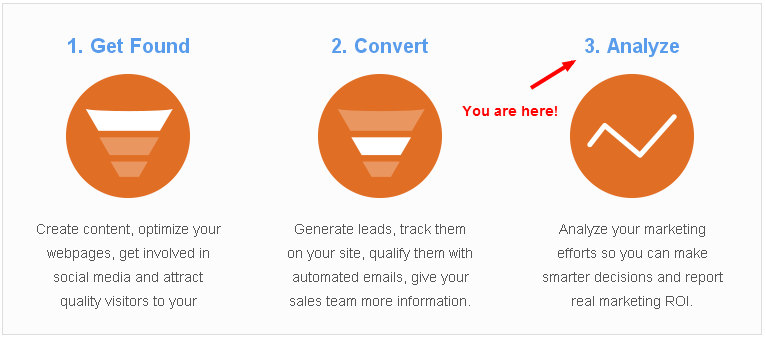Much has been said and written about the principles of inbound marketing. We've talked a lot about how important blogging and generating content regularly is to increasing traffic and conversion rates. The more you have for people to see and learn, the more likely they may convert. What is equally as important as actually generating the content is reviewing your website's analytics. These tools are a must for measuring and gauging the effectiveness of the content you are producing, whether it is a blog article, white paper, or anything in between. In this 3-part series, we hope to show how important analytics are to the success of your inbound marketing campaign.

Another great thing about analytics is the ability to monitor up-to-the-minute statistics about your website. Google Analytics, a free tool, offers a variety of metrics by which to measure your site's performance. Let's briefly talk about a few of the important metrics.
1. Visits '-Think of it as a department store. The visit occurs when you enter the store. You can go to the electronics, toy, sporting goods, etc, but you've already technically visited the store, regardless of your behavior in it. On the web, a visit is counted when the visitor enters the website. Once there, they can look at 1 or 1 million pages.

2. Bounce Rate '- This is the percentage of visitors who enter your site and view just one page before leaving. Depending on the type of page you have, the bounce rates will vary. For example, a blog may and should have a bounce rate between 70-90%, while a retail site should be 20-40%.
3. Pageviews '- If a visitor lands on your homepage, checks out your blog, goes to your contact page, then to your about us section, they have aggregated 4 pageviews. This is literally the number of pages viewed on your site. Always good to know how much interaction your site is getting.
4. Average Visit Duration '- This metric goes hand and hand with bounce rate. If your visit duration average is low, then you likely have a high bounce rate since visitors are not spending a lot of time on your site. On the other hand, a low bounce rate means people are spending more time on your site. Try and improve your visit duration and you'll kill two birds with one stone by improving your bounce rate as well.
The exciting new tools that can be implemented to websites to optimize, analyze and market to target businesses and individuals were not available years ago. These tools improve understanding of how visitors are landing on your site and how they interact while they are there. At commonplaces, we have used both Google Analytics and more advanced inbound marketing analytics and tools to find the needs of our customers. These marketing systems have been an invaluable tool to allow the team to focus our attention on true marketing ROI. Let us know any of your questions about website analytics.

